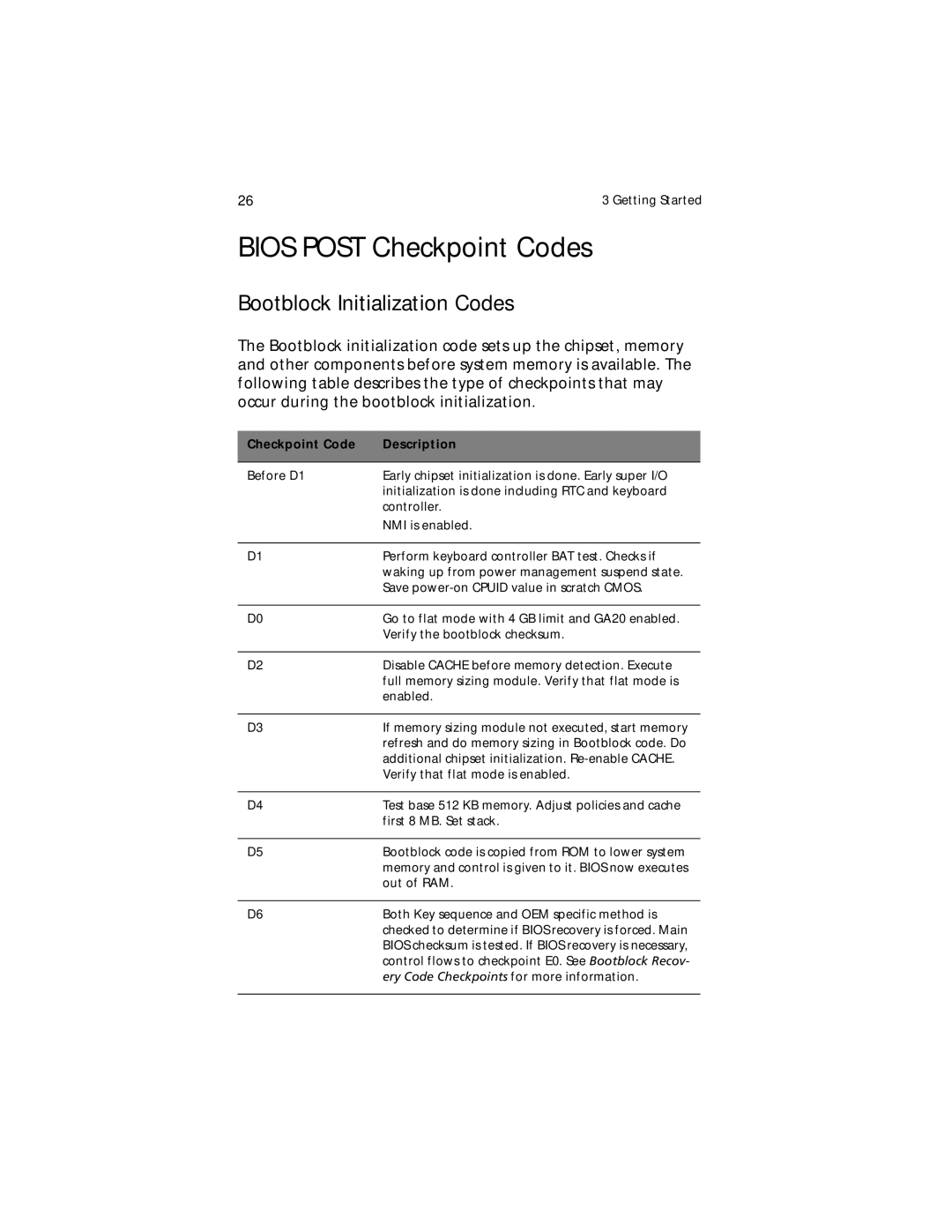26 | 3 Getting Started |
BIOS POST Checkpoint Codes
Bootblock Initialization Codes
The Bootblock initialization code sets up the chipset, memory and other components before system memory is available. The following table describes the type of checkpoints that may occur during the bootblock initialization.
Checkpoint Code | Description |
|
|
Before D1 | Early chipset initialization is done. Early super I/O |
| initialization is done including RTC and keyboard |
| controller. |
| NMI is enabled. |
|
|
D1 | Perform keyboard controller BAT test. Checks if |
| waking up from power management suspend state. |
| Save |
|
|
D0 | Go to flat mode with 4 GB limit and GA20 enabled. |
| Verify the bootblock checksum. |
|
|
D2 | Disable CACHE before memory detection. Execute |
| full memory sizing module. Verify that flat mode is |
| enabled. |
|
|
D3 | If memory sizing module not executed, start memory |
| refresh and do memory sizing in Bootblock code. Do |
| additional chipset initialization. |
| Verify that flat mode is enabled. |
|
|
D4 | Test base 512 KB memory. Adjust policies and cache |
| first 8 MB. Set stack. |
|
|
D5 | Bootblock code is copied from ROM to lower system |
| memory and control is given to it. BIOS now executes |
| out of RAM. |
|
|
D6 | Both Key sequence and OEM specific method is |
| checked to determine if BIOS recovery is forced. Main |
| BIOS checksum is tested. If BIOS recovery is necessary, |
| control flows to checkpoint E0. See Bootblock Recov- |
| ery Code Checkpoints for more information. |
|
|
